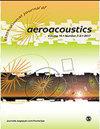低噪声电动飞机面临的挑战和机遇
IF 1.3
4区 工程技术
Q3 ACOUSTICS
引用次数: 6
摘要
作为城市和区域交通基础设施的一部分,一种新型电动飞机正在开发中,用于运送人员和货物。为了让公众接受这些行动,这些飞机需要比传统飞机和直升机安静得多。本文旨在回顾和总结与这种新型飞机有关的航空声学研究。首先,简要回顾了电动飞机的历史,重点介绍了这些飞机与传统飞机的不同之处。其次,回顾了旋翼噪声产生的物理原理,重点介绍了电动飞机最可能关注的噪声源。这些噪声源分为确定性噪声源和非确定性噪声源。确定性噪声主要是由部件间气动相互作用引起的非定常载荷噪声。旋翼或螺旋桨叶片与吸入尾迹、大气和边界层中自生的湍流相互作用将产生不确定性噪声。对这些噪声源的文献进行了综述,重点介绍了它们在电动飞机上的适用性。然后确定了航空声学学家在理解电动飞机噪声产生方面所面临的挑战,以及通过计算航空声学,飞行模拟和自治技术的进步可能实现的预测和减少电动飞机噪声的新机会。本文章由计算机程序翻译,如有差异,请以英文原文为准。
Challenges and opportunities for low noise electric aircraft
A new class of electric aircraft is being developed to transport people and goods as a part of the urban and regional transportation infrastructure. To gain public acceptance of these operations, these aircraft need to be much quieter than conventional airplanes and helicopters. This article seeks to review and summarize the aeroacoustic research relevant to this new category of aircraft. First, a brief review of the history of electric aircraft is provided, with an emphasis on how these aircraft differ from conventional aircraft. Next, the physics of rotor noise generation are reviewed, and the noise sources most likely to be of concern for electric aircraft are highlighted. These are divided into deterministic and nondeterministic sources of noise. Deterministic noise is expected to be dominated by the unsteady loading noise caused by the aerodynamic interactions between components. Nondeterministic noise will be generated by the interaction of the rotor or propeller blades with turbulence from ingested wakes, the atmosphere, and self-generated in the boundary layer. The literature for these noise sources is reviewed with a focus on applicability to electric aircraft. Challenges faced by the aeroacoustician in understanding the noise generation of electric aircraft are then identified, as well as the new opportunities for the prediction and reduction of electric aircraft noise that may be enabled by advances in computational aeroacoustics, flight simulation, and autonomy.
求助全文
通过发布文献求助,成功后即可免费获取论文全文。
去求助
来源期刊

International Journal of Aeroacoustics
ACOUSTICS-ENGINEERING, AEROSPACE
CiteScore
2.10
自引率
10.00%
发文量
38
审稿时长
>12 weeks
期刊介绍:
International Journal of Aeroacoustics is a peer-reviewed journal publishing developments in all areas of fundamental and applied aeroacoustics. Fundamental topics include advances in understanding aeroacoustics phenomena; applied topics include all aspects of civil and military aircraft, automobile and high speed train aeroacoustics, and the impact of acoustics on structures. As well as original contributions, state of the art reviews and surveys will be published.
Subtopics include, among others, jet mixing noise; screech tones; broadband shock associated noise and methods for suppression; the near-ground acoustic environment of Short Take-Off and Vertical Landing (STOVL) aircraft; weapons bay aeroacoustics, cavity acoustics, closed-loop feedback control of aeroacoustic phenomena; computational aeroacoustics including high fidelity numerical simulations, and analytical acoustics.
 求助内容:
求助内容: 应助结果提醒方式:
应助结果提醒方式:


